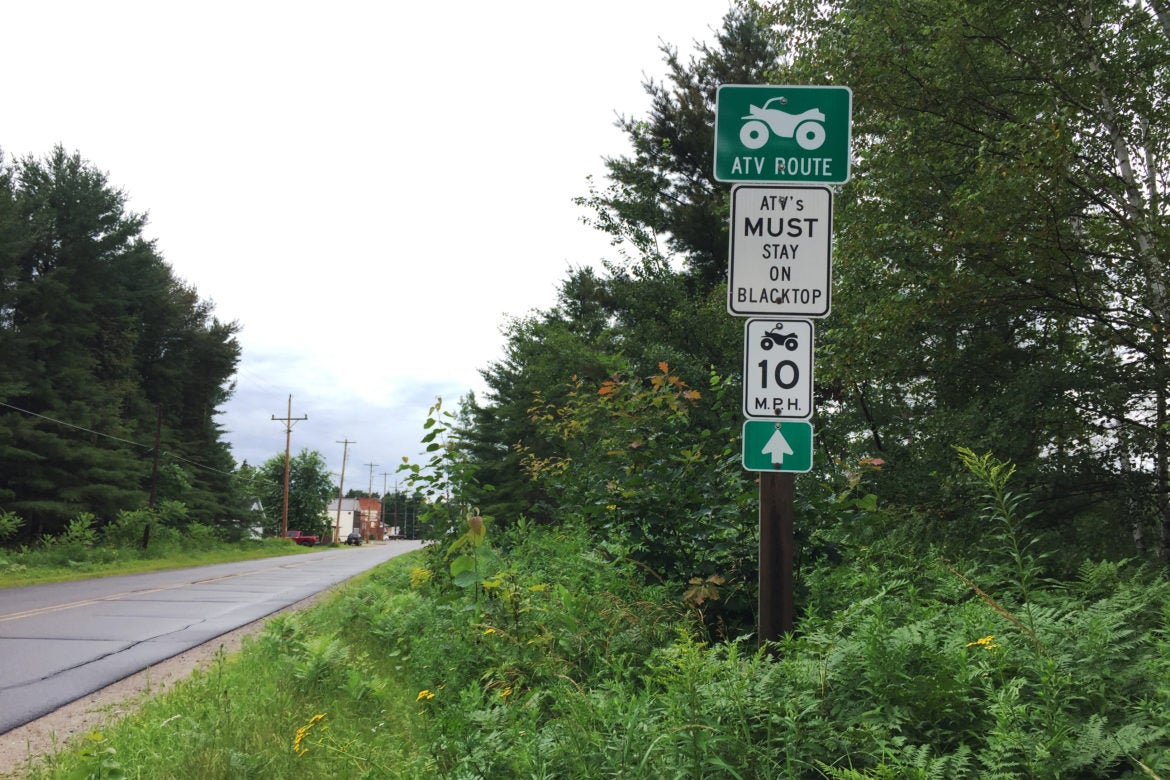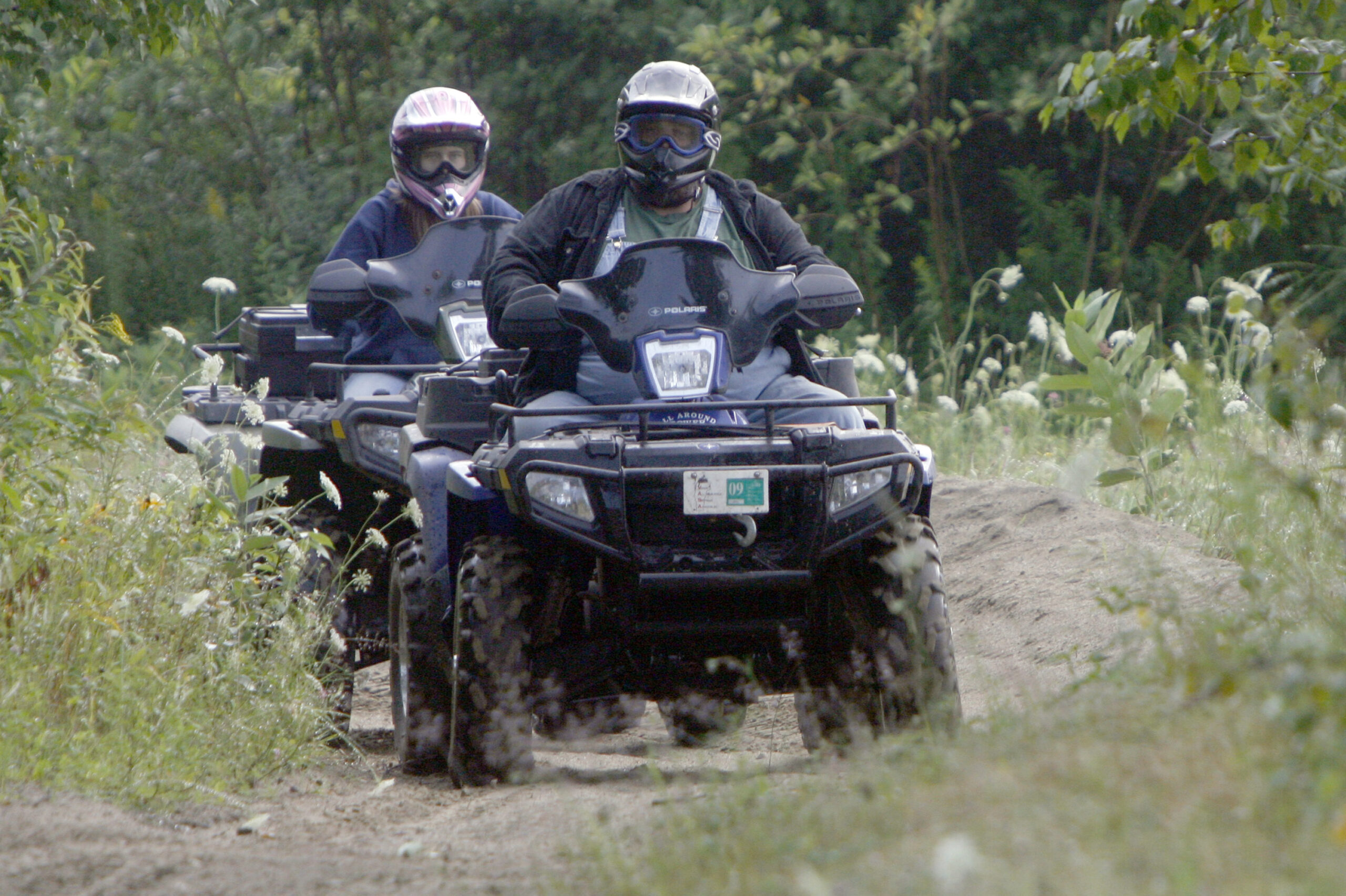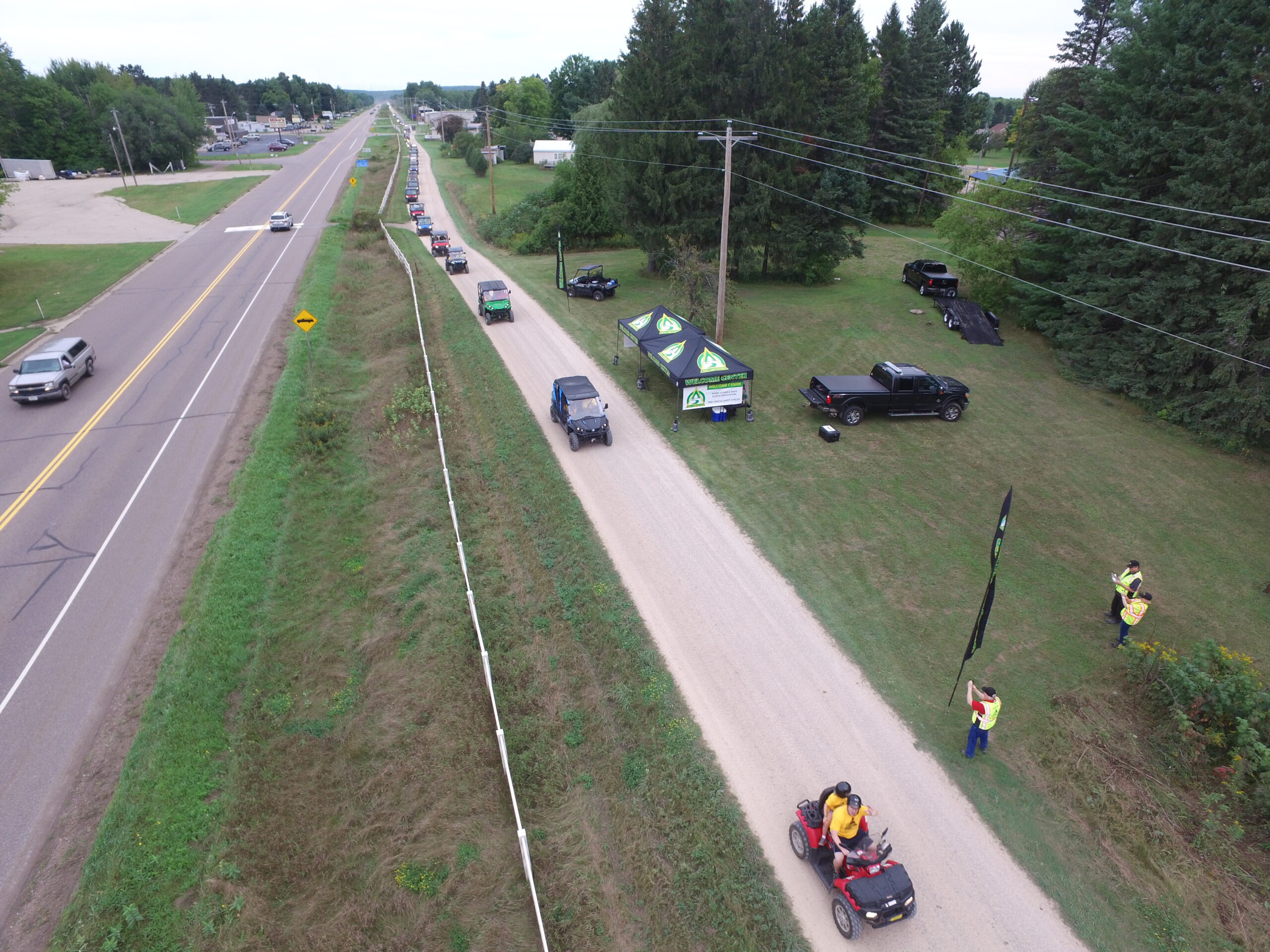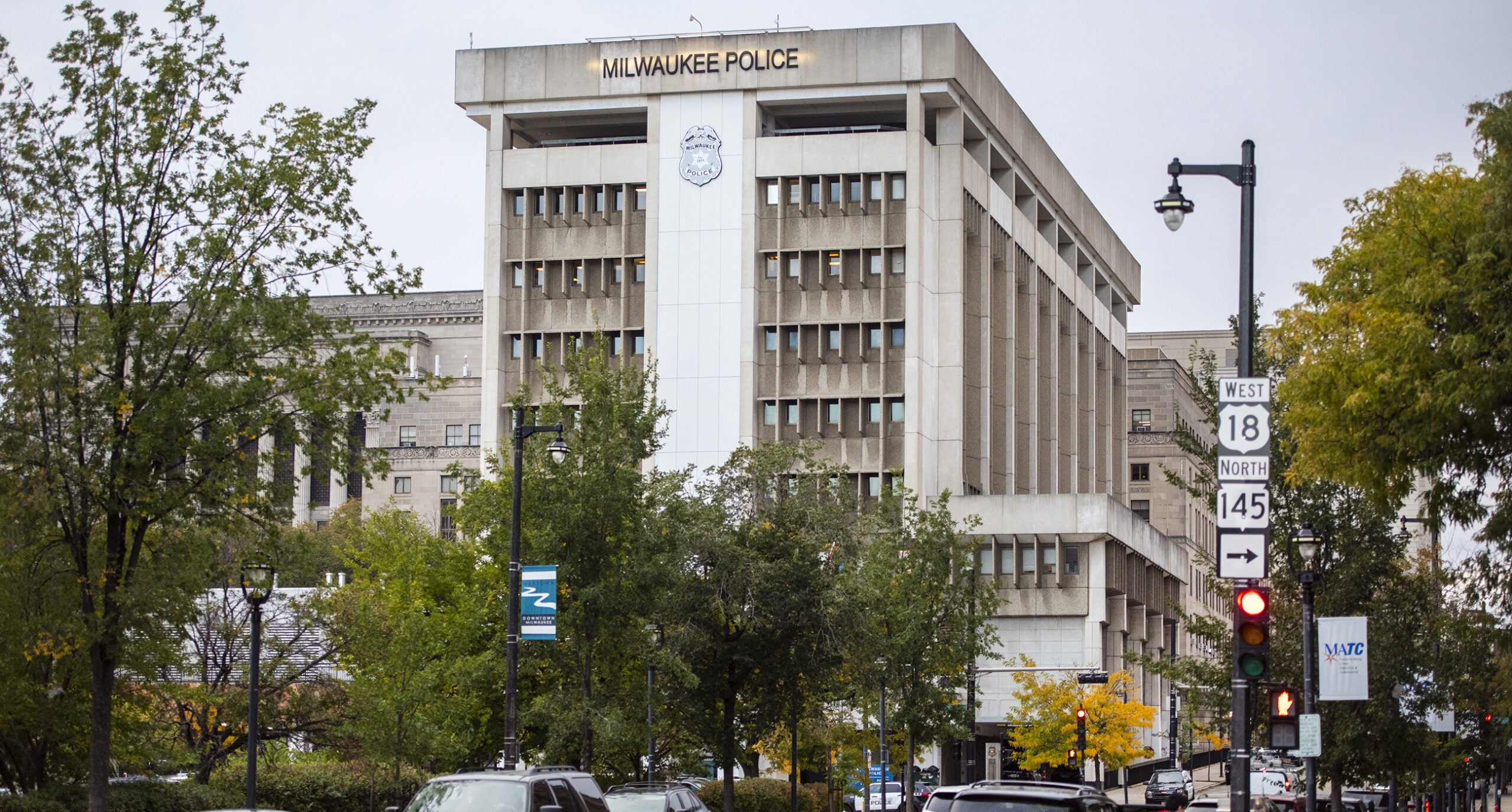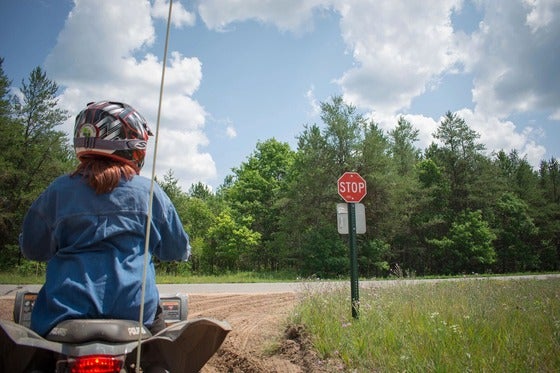More than 14,000 people, including roughly 3,200 children age 15 or younger, have been killed in crashes of all-terrain vehicles in the United States since federal safety officials began keeping track in the early 1980s.
Studies have shown more than half of the deaths occur on public or private roads — even though ATVs are required to display safety warnings they are not designed to be operated safely on roads.
But pushed by riders and local business interests, more than two-thirds of the states, including Wisconsin, now allow off-highway vehicles on some public roads, or permit local jurisdictions to allow the use of ATVs — and other off-road machines known as recreational off-highway vehicles, or ROVs — on public roadways.
News with a little more humanity
WPR’s “Wisconsin Today” newsletter keeps you connected to the state you love without feeling overwhelmed. No paywall. No agenda. No corporate filter.
It is not happening just in rural areas of Wisconsin. This spring and summer, the Juneau County cities of New Lisbon, population 2,600, and Mauston, 4,500, opened up all nearly of their city streets to ATVs and ROVs, also known as UTVs (utility terrain vehicles). A year ago, Eagle River, the “Snowmobile Capital of the World,” did the same thing for its 1,400 residents.
Safety advocates have pushed back again this trend, but they are losing more fights than they win.
“This is an uphill battle,” acknowledged Rachel Weintraub, general counsel of the Consumer Federation of America, which has spearheaded efforts to restrict use of off-highway vehicles on paved, dirt and gravel roads.
The Specialty Vehicle Institute of America trade group says it also sent letters in the past couple of years opposing more than 60 measures in 23 states.
Off-highway vehicles can reach highway speeds but, with their low-pressure tires and high center of gravity, they are prone to tip over or go out of control on roads.
As of July 25, there had been eight fatalities in Wisconsin this year on roads involving off-road vehicles, according to state Department of Natural Resources statistics. Among the eight, five were on roads officially designated as ATV/UTV routes. In 2016, 14 of the 22 fatal ATV or UTV crashes occurred on roadways, eight of them on roads marked as ATV/UTV routes.
In some of these on-road crashes, the ATVs or UTVs rolled over or lost control when drivers took a curve or turn too fast, according to DNR summaries. Drivers also were killed on roads after being hit by a car, another off-road vehicle or a deer or while crossing a U.S. highway while on an ATV route.
Roger Flaherty, president of the Landover ATV/UTV Inc. riding club in Vilas County, said he believes alcohol use and lack of helmets are bigger dangers than riding on the road. He said manufacturers’ cautions to use the vehicles only off road are intended to “cover their liability.”
Alcohol was a factor in at least four of the eight fatal on-road ATV or UTV crashes in 2017, with results pending in the remaining four, DNR statistics show. None of the people killed in those eight on-road fatalities was wearing a helmet. Alcohol has a factor in 11 of the 14 on-road fatal crashes in 2016; 12 of those 14 victims were not wearing helmets.
As FairWarning has reported, while the Consumer Product Safety Commission regulates hazardous products and the National Highway Traffic Safety Administration oversees traffic safety, neither federal agency has authority over where people operate off-highway vehicles, leaving the issue in state and local hands. At the same time, the safety commission has warned that children under 16 should not drive adult-size ATVs and that the vehicles should not be operated on paved roads.

Mary Matthias/Wisconsin Center for Investigative JournalismMary Matthias/Wisconsin Center for Investigative Journalism
Undercutting The Industry’s Official Position
Safety advocates have unsuccessfully urged the commission to expand its warning to include unpaved roads, a position that was bolstered by a 2016 University of Iowa study finding that 42 percent of ATV roadway deaths occur on unpaved surfaces.
“ATVs are designed for off-road use only and multiple factors make them at risk for loss of control on both paved and unpaved roads,” study co-author Charles A. Jennissen wrote in a letter to the commission.
The Specialty Vehicle Institute of America, a manufacturers trade group, takes the position that “ATVs are designed, manufactured and sold for off-road use only.” But a FairWarning review found leading manufacturers and dealers sometimes have supported groups or made statements that undercut the industry’s official position.
Yamaha, for example, states in its ATV owner’s manuals: “Never operate an ATV on any public street, road or highway, even a dirt or gravel one.” But Yamaha, through a grant program that provided more than $350,000 last year for trail development, maintenance and safety, gave a portion to riders clubs that also fight for opening public roads to off-highway vehicles.
Yamaha did not respond to requests for comment.
Polaris, which bills itself as the world leader in an industry that annually sells about 400,000 ATVs and 480,000 ROVs, has also provided trail grants to a handful of rider clubs that have pushed for local governments to open public roadways.
Polaris, based in Medina, Minnesota, declined an interview request but, in a prepared statement, said, “Our vehicles are designed for off-road use and should not be operated on public roads, unless they have been marked for off-road (vehicle) use by local or state legislation.”
The Consumer Federation of America’s Weintraub said Polaris’ reference to local or state legislation “entirely muddies the water.”
In the first half of 2017, the federation sent 28 letters highlighting the hazards to government bodies considering on-road use. That’s nearly as many as in all of 2015 or all of 2016, a response to the stepped up push at the local level by off-highway enthusiasts.
But this year, at least eight governments — including cities and counties in Minnesota, Indiana, Michigan and Wisconsin and the state legislature of Utah — have approved the opening of roads.
Among them was the town of Grant in Portage County southwest of Stevens Point, Wisconsin. In 2016, the town board voted to designate certain rural roads as ATV routes after a public hearing that drew about 100 people.
In June, the board voted 2-1 to expand the route system. The safety federation had sent a letter to town of Grant officials, urging them to oppose the expansion.
Town chairwoman Sharon Schwab cast the lone “no” vote. She said the federation’s concerns, along with manufacturers’ recommendations not to operate ATVs on roadways, influenced her decision.
“We had a plethora of information about the safety concerns,” Schwab said.”The purpose of town government is really to protect, in my view … public health and safety and welfare. In my assessment, this proposal did not pass the smell test.”
Schwab did credit the town with adding restrictions that enhance safety, including banning on-road ATV use after dark, setting a 10 mile-per-hour speed limit near dwellings, people and horses, and requiring everyone under 18 to wear a helmet.
The federation knows of only two communities — Wellsville, New York, and Fripp Island, South Carolina — that decided against opening roadways this year after getting the warning letters.
Injuries More Serious On Roadways
Nearly 100,000 people are hurt annually in ATV crashes, according to federal figures. Researchers have found roadway injuries tend to be more serious than those on forest trails and other off-road locations.
A study published in July by the journal Pediatrics found a more than 10 percent decline in children’s ATV injuries in Pennsylvania in recent years. But the researchers noted that the use of ATVs on paved roads, “especially among adolescents, increases the mortality rate.”
Researchers tend to focus only on ATV injuries because comprehensive statistics are not available for ROVs. However, as FairWarning reported in 2015, hundreds of people have been killed in ROV crashes.
Sales of these vehicles have skyrocketed since their introduction in the early 2000s as an alternative to ATVs. Unlike ATVs, which the rider straddles like a motorcycle, ROVs are more Jeep-like in appearance, have bench seating for two or four riders and include safety features such as seat belts.
According to the Wisconsin DNR, the state has about 245,000 registered ATVs and about 44,000 UTVs.
Yogi Antoniewicz enjoys riding his two-seater on the designated ATV/UTV roads near his home in the town of Upham in Langlade County. His dog, Jaeger, often comes along. He supports expanding the on-road system to meet popular demand and to give drivers better access to off-road trails.
But Antoniewicz, who used to volunteer on an ATV road patrol, said he believes there is a lack of enforcement of existing laws. He has seen children as young as 10 on the roads, although state law requires ATV drivers to be at least 12 years old and UTV drivers to be at least 16 — and then only after receiving safety certification.
“The boating laws are enforced pretty well — the ATV laws should also be enforced,” he said.

Yogi Antoniewicz drives his utility terrain vehicle on a designated route for all-terrain vehicles in the town of Upham in Langlade County. Antoniewicz favors increasing the number of off-road vehicle routes on roadways but believes there should be more enforcement of safety rules. Photo taken Aug. 3, 2017 in Langlade County, Wis. Mary Matthias/Wisconsin Center for Investigative Journalism
Wisconsin Rules Of The Road For ATVs
The Wisconsin Department of Natural Resources offers the following guidance for off-road vehicle use on public roadways:
- Operation on and around public roads is highly restricted and in most cases illegal
- Do not assume that you can ride on or next to roads (ditches) the same way snowmobilers do. These general allowances do not exist for ATV operation.
- There is no residential access allowance that permits you to ride on a roadway from a dwelling to the nearest trail or route. You will need to haul your machine to the nearest legal access point.
- ATV and UTV operators who are at least 12 years old for an ATV — and at least 16 years old for a UTV — must complete a safety certification course to operate on public ATV/UTV trails and areas in Wisconsin. This requirement does not apply to people born on or before Jan. 1, 1988.
You may operate on roadways in the following situations:
- For agricultural purposes
- On an officially designated and signed ATV route
- On roads not seasonally maintained for roadway use
- While crossing roadways but only if done in the most direct manner possible
This story was reported by FairWarning (www.fairwarning.org), a nonprofit news organization based in Pasadena, California, that focuses on public health, consumer and environmental issues. The nonprofit Wisconsin Center for Investigative Journalism (www.WisconsinWatch.org) distributed the story and the Center’s Mary Matthias and Dee J. Hall contributed to it. WCIJ collaborates with Wisconsin Public Radio, Wisconsin Public Television, other news media and the UW-Madison School of Journalism and Mass Communication. All works created, published, posted or disseminated by the Center do not necessarily reflect the views or opinions of UW-Madison or any of its affiliates.

